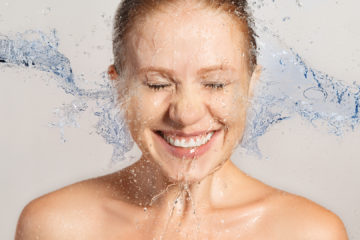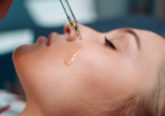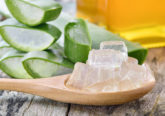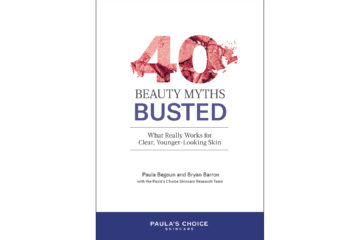4 Ways You Didn’t Know The Haze Can Affect Your Skin
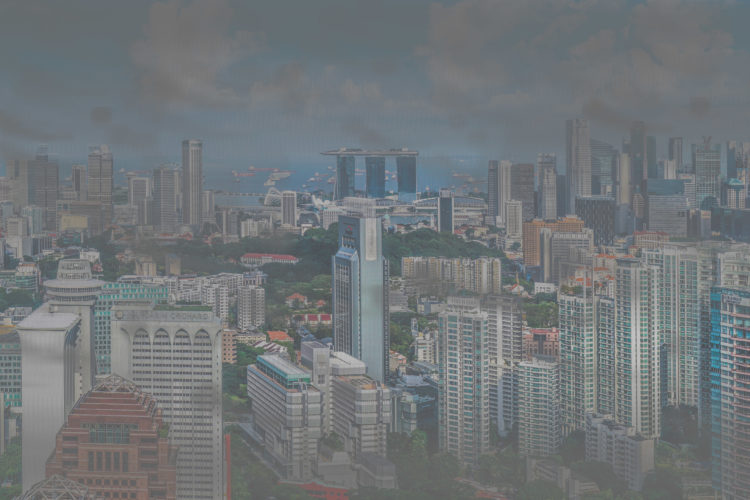
Haze, haze, go away. Never come again another day. Sigh…it’s that time of the year where the usually clear, sunny skies in Singapore is shrouded in a thick blanket of gray haze. During these days, we mask up, minimize our activities outdoors and chill out indoors with air filters on at full blast. While you may already be well-versed in the lifestyle dos and don’ts on hazy days, you may not be fully aware of the havoc the haze wrecks on your skin since it may not cry out in discomfort as immediately as our throats and eyes do.
Let’s see how the haze can be damaging to our skin and simple ways to prevent it.
1. The haze contains air pollutants that are harmful to the skin

Rash, itchiness, redness, zits breakouts…the plethora of skin ailments that seem to plague many people, even those with great skin on hazy days is exasperating. That’s because the haze contains high levels of air pollutants such as soot and dust particles, carbon dioxide as well as other toxic gases which can adversely affect our skin.
Solution
To keep haze pollutants from affecting your skin, step up on your skincare routine in little ways. For example, use a alcohol free makeup remover to rid surface grime before using your facial cleanser. However, make sure that your facial cleanser is something that gently cleanses without leaving your skin feeling taut. Should your face feels ‘squeaky clean’ or tight, your facial cleanser may have robbed your skin of its natural oil, causing it to feel dehydrated. Avoid cleansers with strong scents and fragrance.
Tip
Choose a mild facial cleanser which doesn’t deplete your skin of its natural oil and moisture or make your face feels tight after washing.
You should also stop using that abrasive facial scrubs that contain microbeads as over scrubbing skin’s surface can disrupt the skin’s ability to heal and enlarge the pores.
2. Haze particles cause premature skin aging
While there are short-term skin discomfort such as those mentioned above, there are long-term implications of the haze for our skin too.Haze can cause free radical damage, a major contributor of premature aging.When haze pollutants obstruct oxygen supply to the skin, there’s loss of elasticity and wrinkles may appear. If you’re already having mature skin, it may be more susceptible to haze pollutants as its ability to combat free radicals reduce as you age.
Solution
A well-blended antioxidant serum not only strengthens your skin’s barrier, it also forms a protective layer on your skin to block out haze pollutants. So always remember to include antioxidant serum before applying a moisturizer and sunscreen.
Tip
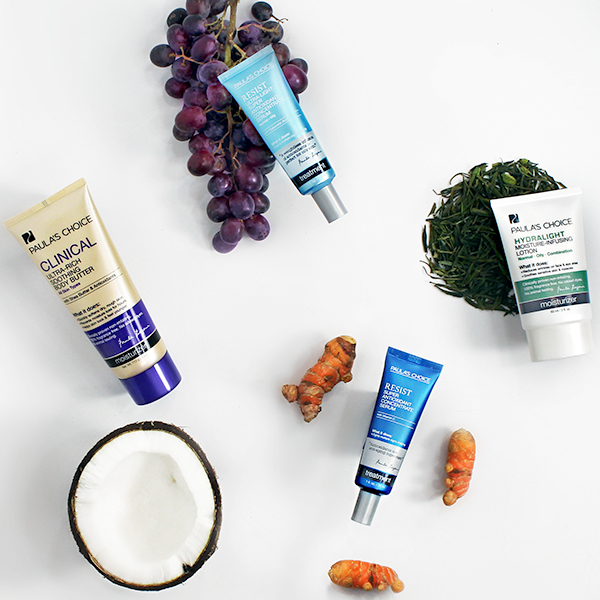
Using a lightweight antioxidant serum can help to defend against environmental stress on skin.
For people with existing skin conditions such as eczema and psoriasis could see their conditions worsen on hazy days. So cover up to avoid letting broken skin come into contact with the haze’s pollutants and avoid contact with hot water. Always seek medical treatment should you feel that your skin is reacting worse than you expected (e.g. persisting redness and itchiness).
3. UV rays is stronger on hazy days
Think the haze has blocked out some of the sun’s UV rays? Think again. The haze actually traps UV rays in the atmosphere and minute particles scatter and redistribute UV rays over the sky. In fact, you’re more exposed to UV rays outdoors on a hazy day than on a clear, sunny day.
Solution
Applying sunscreen is the most crucial step as it helps to minimize sun damage during hazy conditions.
4. Haze may reduce your immunity
The skin is the largest organ of the body and its health is closely related to your general well-being. Just like how a healthy diet can help to keep your heart and other parts of your body healthy, your skin also requires certain nutrition to keep it healthy.
On hazy days, besides breathing in haze pollutants through the nose, your skin also absorbs the toxic gases and minute particles. Which is why the clinics are usually packed with people with haze-related ailments during those hazy months. A whole host of air pollutants and toxic gases can easily get to kids, the elderly and people in poor health.
Solution
Diet is one of the best ways to combat the undesirable health effects the haze may bring. Haze or not, always maintain a balanced diet rich in vitamins A, B, C, D, E and minerals such as zinc, selenium, copper and iron, Omega-3 fatty acids as well as antioxidants to build up your immunity.
These nutrients-dense food are easily incorporated into your breakfast cereals or main meals. Some of them are equally scrumptious as snacks. So, be it a normal day or hazy day, there’s really no excuse not to enjoy more of the goodness and health benefits of nutritional food. With general good health, your skin can be looking radiant as well.
Food rich in vitamin A
Carrots are known to be beneficial to eye health. One medium carrot supplies over 200% of vitamin A an average person needs a day. They’re also rich in vitamins C, B, K, magnesium and fiber. Other food rich in vitamin A include sweet potatoes, butter squash, tomatoes and spinach, among others. It’s also good to enjoy more mangoes, papayas, cantaloupes and dried apricots.
Food rich in vitamin B
Vitamin B is a big family consisting of many different types which all have important functions in keeping you in the pink of health. You can get enough of various types of vitamins B by eating a variety of food such as whole grains, nuts, lentils, dairy products such as yogurt and cheese, leafy green vegetables like spinach, seafood, meat and poultry.
Food rich in vitamin C
Generally, fruits and vegetables are packed with vitamin C. Good sources of it can be found in broccoli, brussels sprout, kale, cauliflower, papaya, pineapple, strawberries, kiwi and mango, among others.
Food rich in vitamin D
While sunlight is the most abundantly available and free (!) form of vitamin D, there are also food that you can eat to supplement it. Cod liver oil, mushrooms, seafood, toufu, diary products, eggs, nuts as well as beans and pulses.

Food rich in vitamin E
Almonds are the richest, non-meat sources of vitamin E. Other nuts rich in vitamin E to eat include sunflower seeds, pumpkin seeds, pine seeds, hazlenuts.Vegetables like spinach, broccoli, kale, parsely, swiss chard and mustard greens. Fruits such as avocados and papayas are also good sources of the vitamin.
Food rich in Omega-3
Omega-3 fatty acids which has anti-inflammatory properties which will go some way in reducing skin and eye irritations triggered by the haze. Nuts and seeds such as walnuts, flax seeds, chia seeds. Omega-3 rich seafood include salmon, tuna, mackerel and oysters. Eat more spinach, toufu, winter squash, cauliflower, kale and broccoli for omega-3 goodness.
Food rich in antioxidants
Anti-oxidants not only fight free radicals in our skin and keep it healthy, they’re also little warriors that defend our general well being. Enjoy beans such as small red beans and red kidney beans abundantly. Also relish your berries such as strawberries, raspberries, cranberries, blueberries, cherries and fruits like apples and black plums.
Reduce intake of refined sugar

While you may already know that refined sugar isn’t any good for health on normal days, you should make every effort to minimize sugar intake on hazy days as well. That’s because it can sap your energy and leave you feeling more tired than usual. We’re sure nobody wants tired-looking skin as well.
Though there isn’t a ‘perfect diet’ to combat the adverse effects of haze on your health, it’s important to eat a balanced diet, have enough sleep and drink plenty of water to flush out toxins absorbed through the lungs and skin to stay healthy throughout hazy days.
Other haze-friendly reminders
Though the haze could sometimes catch us unaware and inconvenience our lives, we should remain optimistic that its root cause could be eradicated in time to come. Meanwhile, there are really simple and no-brainer ways to escape its gray clutches.
- Minimize outdoor activities and stay indoors whenever you can.
- Keep doors and windows closed and switch on the air-conditioner and air purifier to reduce fine particles and air pollutants.
- If you really need to go outdoors, wear a quality N95 mask that can effectively filter
out small-sized pollutants.




